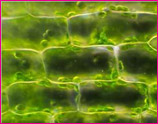Posted on April 15th, 2008 by ASEE
In this scenario-based activity, students design ways to either clean a water source or find a new water source, depending on given hypothetical family scenarios. They act as engineers to draw and write about what they could do to provide water to a community facing a water crisis. They learn basic steps of the engineering design process.
Read More
Filed under: Grades K-5, Lesson Plans | 1 Comment »
Tags: Clean Water, Grades 3-5, Water management
Posted on March 19th, 2008 by ASEE
Students learn how environmental engineers monitor water quality in resource use and design. They employ environmental indicators to assess the water quality of a nearby stream, and make general observations of water quality, as well as count the number of macroinvertabrates. They use the information collected to create a scale to rate the stream’s water quality. Finally, class members compare their numbers and discuss and defend their results.
Read More
Filed under: Grades 6-8, Lesson Plans | Comments Off on Stream Consciousness
Posted on February 3rd, 2008 by ASEE
 Students learn a simple technique for quantifying the amount of photosynthesis that occurs in a given period of time, using a common water plant (Elodea). They can use this technique to compare the amounts of photosynthesis that occur under conditions of low and high light levels. Before the experiment, students come up with a well-worded hypothesis to be tested. After the experiment, students pool their data to get a large sample size, determine the measures of central tendency of the class data, then graph and interpret the results.
Students learn a simple technique for quantifying the amount of photosynthesis that occurs in a given period of time, using a common water plant (Elodea). They can use this technique to compare the amounts of photosynthesis that occur under conditions of low and high light levels. Before the experiment, students come up with a well-worded hypothesis to be tested. After the experiment, students pool their data to get a large sample size, determine the measures of central tendency of the class data, then graph and interpret the results.
Read More
Filed under: Grades 6-8, Grades K-5, Lesson Plans | Comments Off on Bubbling Plants
Posted on January 16th, 2008 by ASEE
This activity introduces students to the concept of the engineering design process and how to apply it. They first receive background instruction about biomedical engineering or bioengineering. Then they learn about material selection and material properties through a guide created for them. Students then break into small groups and brainstorm. Each group is assigned a specific design problem, is given materials, and is asked to create a prototype. To finish, they communicate their solution through a poster presentation.
Read More
Filed under: Grades 6-8, Lesson Plans | Comments Off on Broken Bones
Posted on December 18th, 2007 by ASEE
Students conduct several simple lab activities to learn about the five fundamental load types that can act on structures: tension, compression, shear, bending, and torsion. In this activity, students will play the role of molecules in a beam subject to various loading schemes.
Read More
Filed under: Grades 6-8, Lesson Plans | Comments Off on Forces on the Human Molecule
Posted on December 11th, 2007 by ASEE
Students learn about biomimicry and how engineers imitate nature in the design of innovative new products. They demonstrate their knowledge by practicing brainstorming and designing a new product based on what they know about animals and nature.
Read More
Filed under: Class Activities, Grades 6-8, Grades K-5, Grades K-5, Lesson Plans | Comments Off on Biomimicry: Natural Designs
Tags: Biomimicry, Design
Posted on November 27th, 2007 by ASEE
Students analyze international oil consumption and production data. They make several graphs to organize the data and draw conclusions about the overall use of oil in the world.
Read More
Filed under: Grades K-5, Grades K-5, Lesson Plans | Comments Off on Lesson: Oil and Energy Consumption
Tags: Class Activities, communications, Earth Science, Energy, Grades K-5, Lesson Plan, mining engineering, oil, petroleum engineering
Posted on November 7th, 2007 by ASEE
In exploring ways to use solar energy, students investigate the thermal energy storage capacities of different test materials to determine which to use in solar building design.
Read More
Filed under: Grades K-5, Lesson Plans | Comments Off on Lesson: Capturing the Sun’s Warmth
Tags: Lesson Plan, Solar Engineering
Posted on October 19th, 2007 by ASEE
Students learn about applied forces as they create pop-up-books through the art of paper engineering. They also learn the basic steps of the engineering design process.
Read More
Filed under: Grades 6-8, Grades K-5, Lesson Plans | 2 Comments »
Tags: Design









 Students learn a simple technique for quantifying the amount of photosynthesis that occurs in a given period of time, using a common water plant (Elodea). They can use this technique to compare the amounts of photosynthesis that occur under conditions of low and high light levels. Before the experiment, students come up with a well-worded hypothesis to be tested. After the experiment, students pool their data to get a large sample size, determine the measures of central tendency of the class data, then graph and interpret the results.
Students learn a simple technique for quantifying the amount of photosynthesis that occurs in a given period of time, using a common water plant (Elodea). They can use this technique to compare the amounts of photosynthesis that occur under conditions of low and high light levels. Before the experiment, students come up with a well-worded hypothesis to be tested. After the experiment, students pool their data to get a large sample size, determine the measures of central tendency of the class data, then graph and interpret the results.